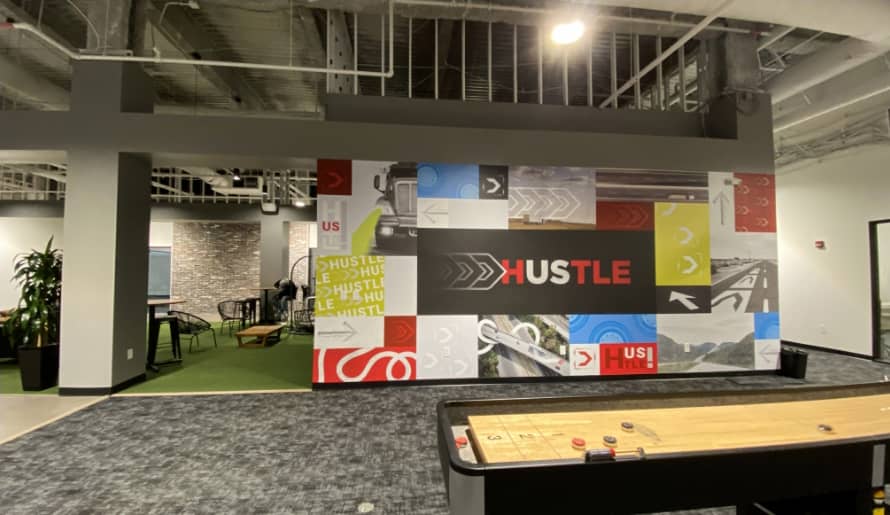It’s often easy to see how a third-party transportation provider (3PL) can help fill in for route guide failures and unexpected last-minute shipments, but there are more ways to extract value from a 3PL partnership. When enlisting the services of a 3PL for last minute shipments only, pricing can vary considerably making it extremely difficult to anticipate costs and accurately forecast your budget. Partnering with a 3PL on deliberate shipments that do not marry well with an asset provider can lead to better service and consistent pricing.
First, it’s important to understand where asset providers and/or private fleets provide the greatest value. If you include asset, non-asset, and private fleets in your plan, you typically want your most consistent lanes on private fleet, highest volume on asset, and variable volume with a 3PL. Asset carriers can build consistent, high volume lanes into their network to ensure they have capacity, often at the lowest cost. However, these costs can vary widely when your volumes unexpectedly rise or fall, or when you need to pull inventory from an unplanned facility. Private fleets tend to have less range, often cannot reach unpredicted locations, and there are only so many trucks available when volumes increase in certain lanes. Asset based carriers are also tethered to their equipment and drivers’ locations so being able to add capacity at a moment’s notice can be a challenge to their model. With these restraints in mind, here are three ways a 3PL can be worked into your logistics strategy to achieve your objectives:
- Lanes that have shown a tendency to surge 10+% or decline 20+% of forecast
- Lanes that have volumes forecasting 20 shipments or less annually
- Projects and inventory moves
Lanes that have shown a tendency to surge 10+% or decline 20+% from forecast
One effective way to get 3PLs to work for you is to uncover which lanes are not as desirable to your asset providers and deliberately take those to bid with your 3PL providers. Ideally, working with 1-2 fast growing, dynamic 3PLs will fit your needs without incidentally driving up your costs through carrier cannibalism. Cannibalism can occur when multiple 3PLs are working on the same shipment at once and carriers are shopping the market to get the highest rate…. ultimately bringing the highest rate back to the shipper. For example; if you move shipments from Chicago to Indianapolis an average of 10 times per week, it’s logical to put 520 in volume for that lane on your RFP. However, if your volumes vary between 5-15 per week, you will have no issues on your first 5 shipments but then things can get more challenging. Asset providers might be able to handle some of the variance but once they have exhausted capacity, these shipments can be subject to unpredictable spot market rates. Forecasts can be more accurate, and budgets upheld with a strategic approach to these fluctuations. If your asset providers are generally capable of handling up to 10 shipments per week, committing to giving your first 8 shipments to your asset provider can improve service while establishing a sense of loyalty. Variability beyond that brings unknown pricing so committing every shipment in excess of 8 per week to your preferred 3PL will create predictability and commitment. Although 3PLs may not always be the lowest cost option, awarding lanes can mitigate the last-minute pricing which can wreak havoc on your transportation budget. The pricing on paper may look higher than the first 8 shipments but overall costs are controlled and anticipated. Even if your lanes sometimes drop far lower than expected, a 3PL can provide a valuable option. As asset providers see dips in anticipated volumes, they are often forced to find alternative shipments to keep their operating margins in line and may ultimately need to reduce their commitment to these lanes.
Lanes that have volumes forecasting 20 shipments or less annually
Aggregating low volume lanes to create a package that fits your budget as well as the service abilities of a 3PL, which can effectively lower your overall spend. 3PL’s are asset neutral and therefore do not need density in certain lanes to source capacity. In fact, low volume or sporadic lanes can be extremely difficult to service for asset providers as these lanes tend to disrupt the network they have established to keep their drivers moving. A strong 3PL will look at the overall business awarded and build a team to support it regardless of the individual lane volumes. They can also run data analysis to create a radius around certain destinations to uncover regional volumes to attract consistent carriers for those lanes, improving service levels. Like volatile lanes, low volume lanes are often the ones that hit the spot market, leading to uncertain pricing and spotty service. Awarding these shipments in aggregate to your preferred 3PL partner can yield a strong, mutually beneficial relationship, leading to increased accuracy and effectiveness within your transportation plan.
Projects and inventory shifts
Even if historical data and forecasting provide guidance on most of your shipping needs, product launches, shifts in inventory, or unexpected issues up stream in your supply chain can create unexpected fluctuations or changes in shipping lanes. Often these are managed through “mini bids” or if completely unexpected, they could wind up on the spot market. The flexible model of 3PLs are a natural fit to short term changes in your shipping patterns. When bundled and presented to a 3PL provider, often the outcome is a balance of cost and service that minimizes disruption to both your customers and to your overall anticipated transportation spend.
In short, 3PLs shine in the exact areas of your logistics plan that private fleets and assets do not typically prefer. By breaking out these irregularities and creating a deliberate plan to partner with a 3PL, you can reap the benefits of a balanced approach and continue to improve your transportation strategy.
Mary Murphy, Vice President of Strategy





